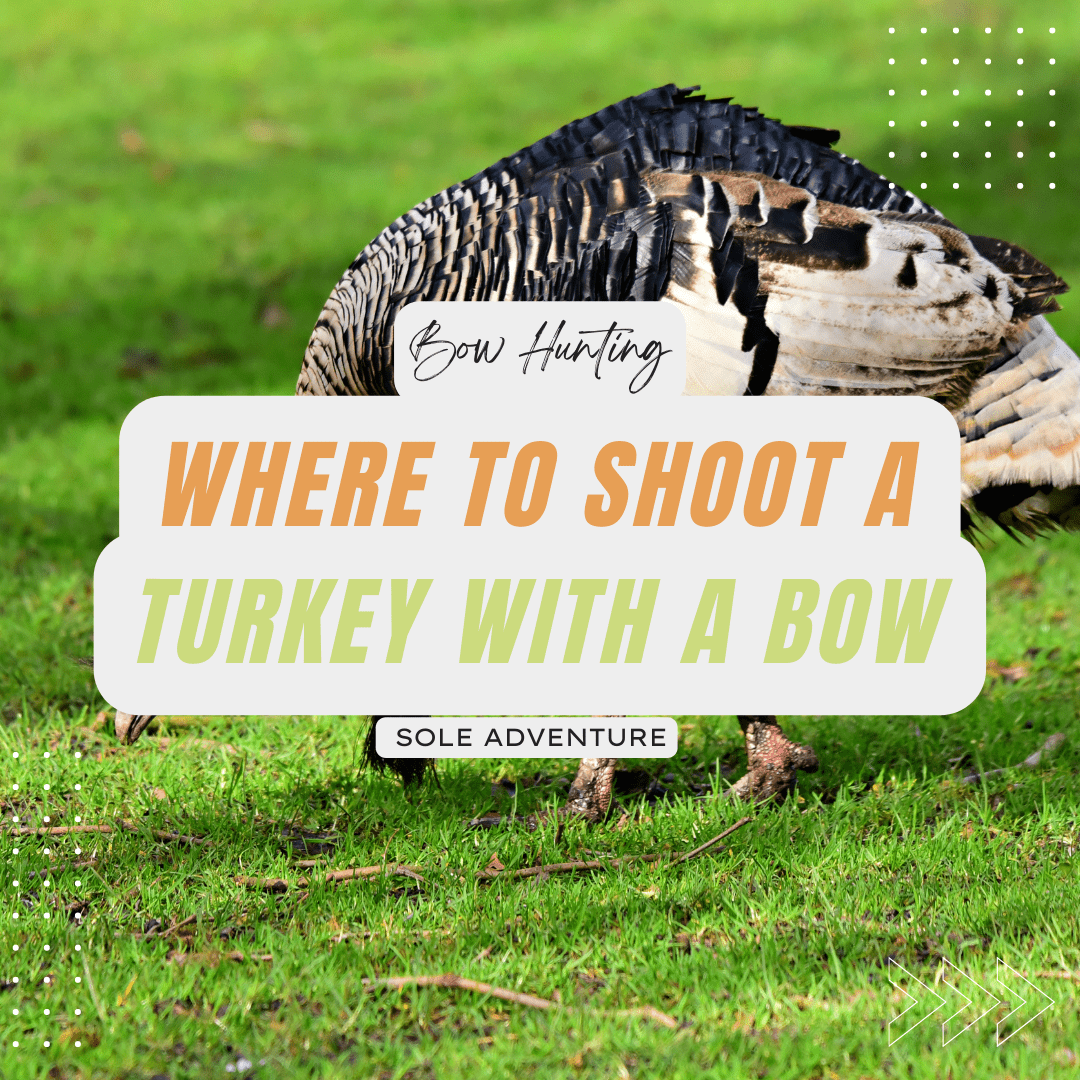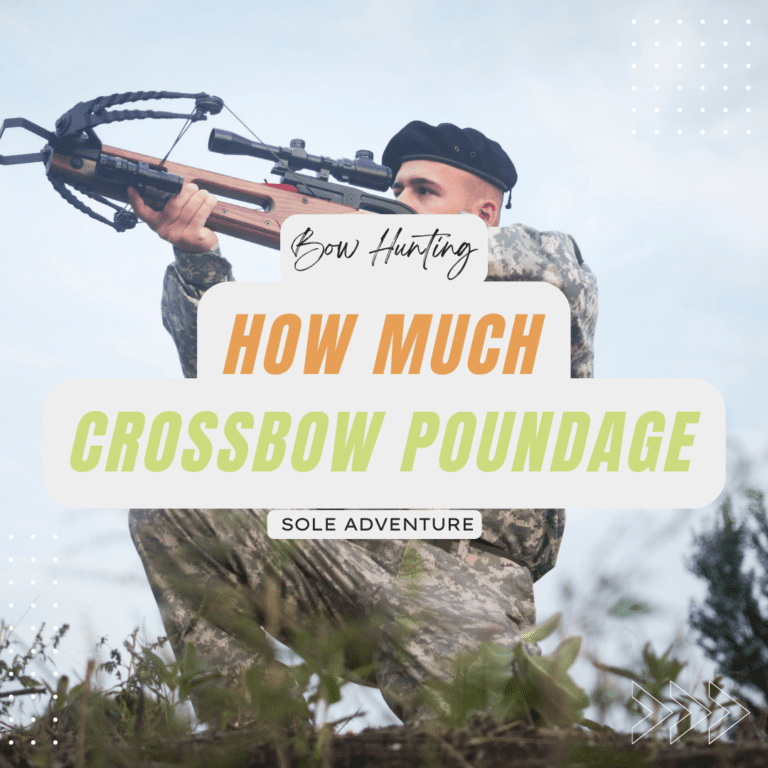Hunting wild turkeys with a bow is an exciting and challenging experience. With the right knowledge and skills, you can ensure a successful hunt and make sure your arrows hit the intended target. Knowing where to aim is the key to success when shooting a turkey with a bow. To help you determine where to shoot a turkey, we’ll discuss the turkey vitals diagram and the best shot placements. We’ll also provide some tips for better accuracy, including using a good ground blind, drawing birds in closer, and using a rangefinder. With this information, you’ll be able to make the most of your turkey hunting experience.
Contents
Turkey Vitals Diagram
Making a clean kill on a turkey requires understanding the location of its vital organs. The lungs and heart are the largest target, about the size of a softball, located high in the back. Taking out a bird at the neck is difficult, as you must aim to sever the spinal column, an area smaller than a ping-pong ball. The head shot is also challenging, as you must aim for the brain, which is only slightly larger than a ping-pong ball and very mobile.
For those with excellent shooting skills, it is possible to make a successful kill at either the neck or head. However, due to their small size and mobility, missing these shots may result in complete misses. Therefore, aiming for the lungs and heart presents your best chance for making a clean kill on any turkey.
Turkey Shot Placement
When it comes to turkey hunting, shot placement is key. Bows and crossbows are popular weapons of choice for many hunters, but the best area to aim for is the heart and lungs. This ensures that the bird will be killed quickly and humanely.
Neck and spine shots can also be effective if you’re looking for a quick kill, but they require more accuracy. Strutting toms can make it especially difficult to hit them in these areas, so most experienced hunters prefer to go for the heart and lungs instead. This gives them a better chance of success while still ensuring a quick death for their prey.
It’s important to practice your shooting skills before going out into the field so that you can make sure your aim is accurate when it counts. You should also familiarize yourself with the anatomy of turkeys so that you know exactly where to aim when you have a shot at one. With proper preparation and practice, you will be able to confidently take down your next turkey with ease.
1. Broadside Shots
When shooting turkeys with an arrow, it is important to aim for the right spot. Broadside shots and rear shots on a non-strutting tom should be aimed at the butt of the wing where it connects to the bird’s body. This shot should break the bird’s wing, hit the spine, or hit the lungs or heart. However, if only the wing is broken, be prepared for a follow-up shot. Accuracy is key when shooting turkeys with an arrow in order for a successful hunt.
2. Quartering Shots
Accurately hitting a forward quartering shot can be difficult for even the most experienced archers. To hit this shot, aim horizontally level with the beard’s attachment and vertically to the off side leg. Imaginary lines should then be drawn from the beard’s attachment to the horizontal line and perpendicular to the ground from the off side leg. This is where the heart is located and it may be possible to hit it, as well as the lungs or spine, but it is not recommended.
3. Straight On
When hunting a tom turkey, the ideal shot is not straight on or slightly quartering. To increase the chances of success, aim for an inch below the beard on a non-strutting tom. If the bird is strutting, target just below where the beard connects to it. When done correctly, this shot can hit the heart or lungs, break the back and sever the spine, and may even break a leg or wing.
It's important to take your time when aiming in order to ensure accuracy. Taking a shot that is too high may result in a missed opportunity and an injured bird. A successful shot should be taken with precision and care to ensure an efficient kill while also avoiding unnecessary suffering of the animal.
4. From the Rear
When hunting wild turkeys, it is important to be aware of the bird’s position and behavior before firing. The best shot is when the bird’s back is towards you, its head is up, and it is not strutting. In this case, aim for the spine between the wings. If the bird is strutting, take a “Texas Heart Shot” and aim for the vent (anus). It is not recommended to shoot a bird with its head down and feeding as it will not present a good target. An arrow delivered to the base of the tail may take out the heart, liver, or lungs but requires a fair amount of accuracy. Therefore, it should only be attempted by experienced hunters.
5. Neck and Head Shots
When hunting a turkey, a clean kill requires accuracy and precision. Neck and head shots can be difficult but mastering them will guarantee success. To ensure the most humane kill, focus on the area midway up the neck where the feathers start and the carbuncles stop. This area provides an ideal target that when hit accurately, will sever the carotid artery and spine in one shot.
It is important to remember that aiming for the head or neck of a turkey requires skill and practice. When shooting at this area, make sure to take into account wind direction, distance from target, elevation of gun barrel, as well as other factors that can affect accuracy. Additionally, use ammunition specifically designed for turkeys with enough power to penetrate through feathers and bone.
By taking these steps into consideration when preparing for a hunt, hunters can increase their chances of making a clean kill on their next turkey hunt.
A Note on Strutting Toms
When hunting a strutting tom, it is important to be patient and wait for the ideal shot. The bird’s feathers will be puffed up, making it difficult to determine where the killing zone is. To get the bird to stand and stretch its neck, hunters can use yelps or clucks which will cause the turkey to look at them in curiosity. This makes it easier to find the correct placement of the shot.
Once the bird has stretched its neck, take aim quickly as this position does not last long. If possible, try to get a broadside shot for more accuracy and better results. When aiming for a headshot, make sure that you are aware of where your pellets are going so that you do not injure other animals or people in the area.
When shooting a strutting tom, always remember to remain calm and take your time while aiming. By doing this you can ensure that you have a successful hunt with minimal effort!
Tips for Better Accuracy
Hunting turkeys can be a challenge due to their suspicious nature. To improve your chances of success, it's important to understand their behavior and habitat, as well as use the right equipment. A shotgun with a tight choke and good scope is ideal for turkey hunting. Practicing shooting from different angles and distances will help you become more accurate when the time comes to take the shot. Camouflage is essential in order to blend into the environment, while decoys can be used to attract the turkey's attention. When it comes time to take the shot, patience is key. Wait for the right moment and make sure you have a clear line of sight before taking aim and firing. With these tips in mind, you should have a better chance of getting the perfect shot and bringing home dinner.
1. A Good Ground Blind is Key
Ground blinds are an essential part of successful turkey hunting. Turkeys have excellent eyesight, so to ensure success, the ground blind should be left up for weeks before turkey season to allow the birds to become comfortable with it. This will reduce the chances of them becoming suspicious and alerting other turkeys to your presence.
When setting up a ground blind, make sure that the turkey cannot see you. If the birds are particularly suspicious, this is even more important. For best results, leave your ground blind up for several weeks before turkey season begins so that they can get used to it. This will make it easier for you to stay hidden and increase your chances of getting a gobbler.
When selecting a ground blind, look for one that blends in well with its surroundings and offers plenty of room for movement. It should also be waterproof and provide adequate ventilation so you don’t overheat while waiting for your target bird.
Finally, remember that patience is key when hunting turkeys from a ground blind. Be still and quiet and wait until the bird is within shooting range before making any sudden movements or noises. With these tips in mind, you’ll be able to successfully hunt turkeys from a ground blind and take home your prize!
2. Draw Birds in Closer
Turkey calling is an important skill to master for any hunter looking to bag a gobbler. With some practice, you can learn to sound like a turkey and not a hunter trying to sound like one. To get started, try mastering the three main calls: gobble, cluck, and yelp. You should practice your turkey calls in the offseason so that when it’s time to hunt, you’re ready.
When you’re out in the field, use your turkey calls to call in birds close enough for shooting range. It’s important to remember that if you do manage to call in a bird within range, you need to take it down quickly. If you hesitate or miss your shot, the bird could easily fly away and be out of reach.
Turkey calling can be a tricky skill requiring patience and dedication but with enough practice, anyone can become an expert caller!
3. Use a Rangefinder
Having accurate knowledge of the distances between you and your target is essential for successful hunting. A rangefinder can help you to eliminate guesswork and ensure that you know exactly how far away your target is.
This device emits a laser beam, which then bounces off the target and back to the rangefinder to calculate its distance. This allows you to accurately measure the distance between yourself and your target, rather than relying on guesswork.
Using a rangefinder can also enable you to plan your shot accordingly. You can decide whether or not it would be beneficial to draw in the target for a better shot, depending on how far away it is from where you are standing.
Rangefinders are not only useful when shooting game birds such as turkeys, but they can be used for any type of hunting activity. Knowing the exact distance between yourself and your target will help you to make more informed decisions when it comes to taking aim at game animals or other targets.
It is important to remember that in the heat of hunting, targets may appear closer than they actually are. Make sure that you take advantage of rangefinders and their ability to provide exact distances - this will improve your accuracy and increase your chances of success when out in the field!







